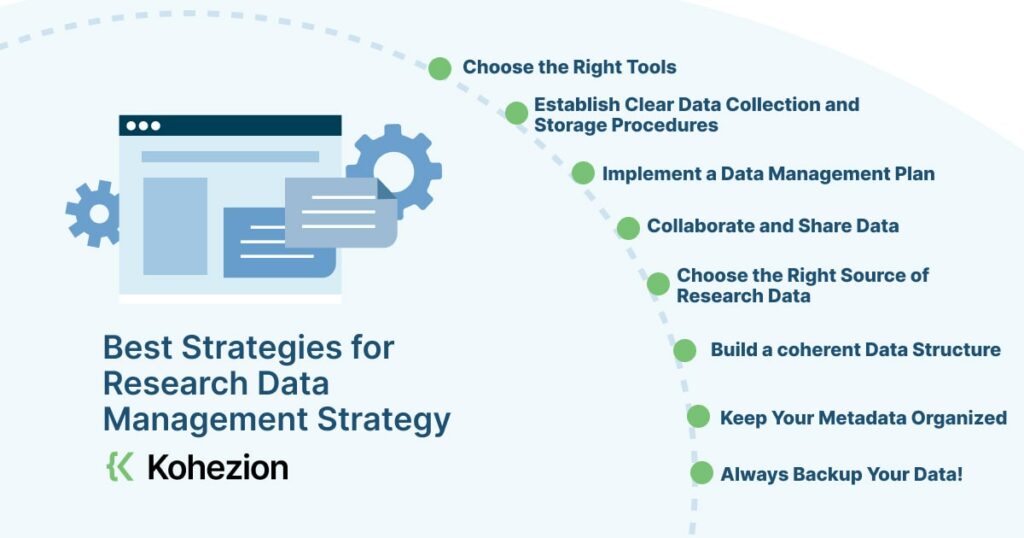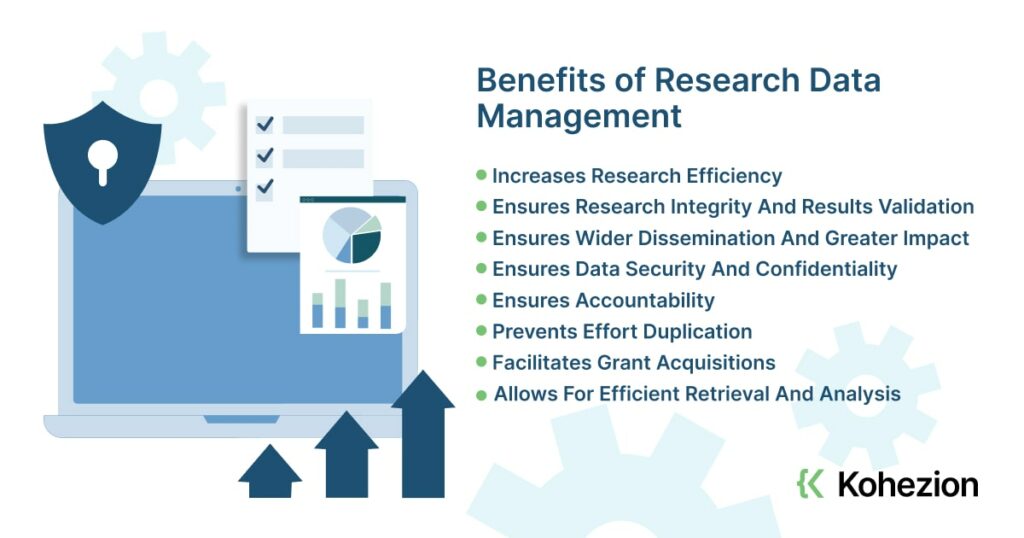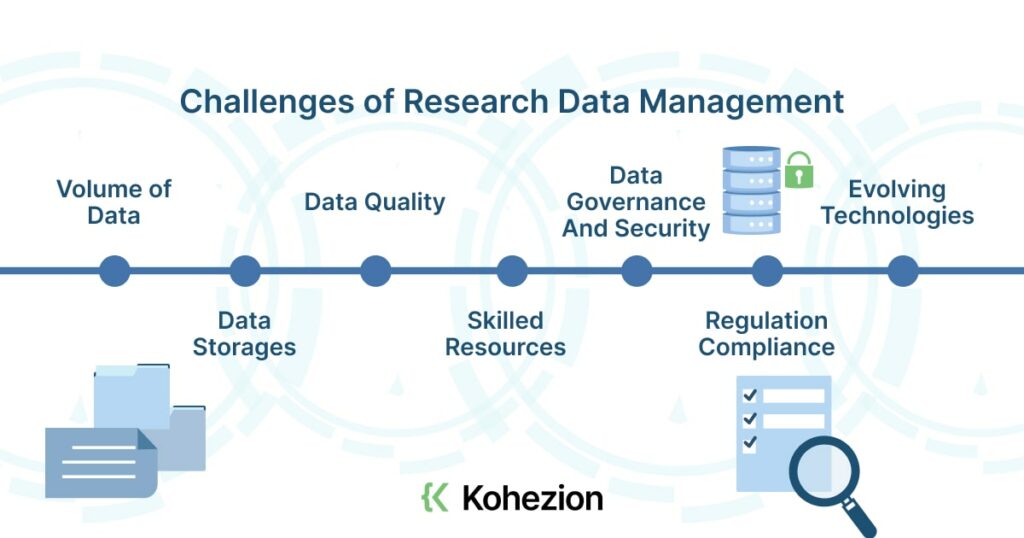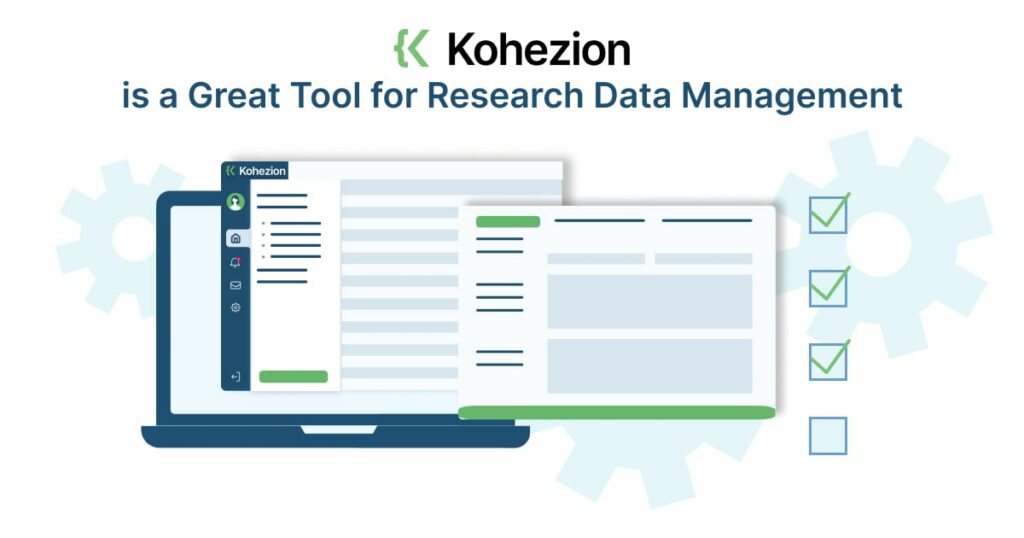If your organization is in the research space, the importance of research data management should be clear. Without it, it would be challenging to ensure credible results. From safeguarding from data loss to ensuring your research can be disseminated properly for further use, the role of research data management can’t be overstated.
What is Research Data Management?
Research data management (RDM) refers to the way you collect, care for, use, store, and share research data. The key elements of RDM include:
- How to store data and create backups to protect them against corruption and loss
- How to organize your data using meaningful file names and folder structures
- How to apply quality controls to your data workflows to maintain its integrity and minimize errors
- How to document your data so you and others can understand it, how it was collected or generated, and how it’s been analyzed or processed
- How to process personal and sensitive data to ensure you meet data protection requirements
- How to preserve and share your data so other researchers can re-use it through data repositories
Good RDM ensures that you share your data in a FAIR way — that is, findable, accessible, interoperable, and reusable. As a research organization, you must require your researchers to develop a data management plan for any project involving the collection of data.
Importance of Research Data Management
RDM is important for a variety of reasons:
RDM maintains the integrity of research. Accurate and well-organized data allows you to draw meaningful conclusions and support evidence-based claims. With proper RDM, you save time and boost your efficiency. This way, you can focus on the more meaningful aspects of the research process.
RDM also helps you cope with the increasingly intricate growth of research data. Plus, it makes data sharing and collaboration easier — this is a must as collaboration between researchers becomes more frequent.
Best Strategies for Research Data Management Strategy

While RDM sounds overwhelming at first, you can get the best results if you follow a few rules of thumb. Below, we list the best strategies that you can apply to improve your research data management strategy:
1. Choose the Right Tools
Select the appropriate tools for RDM. These tools include data analysis software, database systems, and other tools that align with your research requirements. Popular options include Microsoft Excel, Google Sheets, and specialized tools like Kohezion.
Ensure that the tools you use are compatible with the data you’re handling and can facilitate efficient and secure data storage, analysis, and sharing. Your chosen tools must also be easily integrated with other tools that you already use in your organization.
Research and shortlist options, compare and test them, and select and implement the tools. It’s also often necessary to maintain and update the tools you’ve chosen so they continue to meet your changing requirements and goals.
2. Establish Clear Data Collection and Storage Procedures
Developing clear data collection and storage procedures maintains data integrity. Establish clear protocols for data entry, backup, and storage — or work with a software vendor who has taken necessary data security measures.
For quantitative data, specify survey instruments, measurement tools, or data sources. Pro tip: standardize your data entry formats and coding schemes to ensure consistency and accuracy. Implement validation checks to avoid errors during data entry.
For qualitative data, outline your interview protocols, observation techniques, and any other qualitative methods you plan to use. It’s also wise to train your data collectors to ensure consistency and use standardized protocols. Maintain detailed records of the collection process for transparency and easier reproduction.
3. Implement a Data Management Plan
A data management plan (DMP) is a document that describes:
- What type of data will be collected or used in your project
- How you’ll manage the data on a day-to-day basis
- How you’ll preserve the data for the long-term and make it available for others to use
With a DMP, you and your team can work more efficiently, manage risks better, and apply appropriate solutions. Clearly defining roles and responsibilities within your team is also a must. Make sure you’re all on the same page in terms of how to handle sensitive or confidential data.
4. Collaborate and Share Data
If you’re collaborating with colleagues or other researchers, data sharing should be smooth. Encourage clear communication and set expectations upfront. Consider using repositories or cloud-based platforms for easier sharing. Choose a platform that allows for controlled access and proper attribution.
Pro tip: use these tips and best practice for remote collaboration.
5. Choose the Right Source of Research Data
When choosing research data sources, consider their relevance, reliability, and ethical considerations. Take note of the following tips:
- Define your research questions and goals: Your research question will guide your data collection and analysis process, helping you narrow down your focus. Your goals should not only state what you want to achieve but also how you’ll measure your success.
- Identify your data types and methods: As mentioned above, there are two types of data you can collect: quantitative and qualitative. You can either one or both, depending on your purpose.
- Look for existing sources: existing data sources include academic journals, reports, books, databases, websites, and media. Using these sources saves you time and money while adding more credibility to your research. Always consider the quality, reliability, and relevance of the existing data sources.
- Select a sampling strategy: when collecting your own data, you can use two sampling strategy types: probability or non-probability. Probability sampling means you select participants randomly, ensuring people all have equal chances of being selected. Non-probability sampling means selecting participants based on availability, convenience, and other criteria.
- Engage your participants: find and invite participants who meet your sampling criteria, and establish rapport and trust with them. This will help them provide you with honest and accurate data.
- Evaluate and document your sources: evaluating your data sources and participants requires you to assess their strengths, weaknesses, limitations, or biases. Use various criteria, such as validity, representativeness, diversity, and ethics. Document the sources and participants to keep track of the process and support your findings and conclusions.
6. Build a coherent Data Structure
A coherent data structure makes data retrieval easier, plus it improves consistency. You’ll also avoid errors during the analysis stage.
One of the best ways to build a coherent data structure is to establish a logical data hierarchy. Put related variables in the same group based on their thematic similarities or relevance. For example, you can group demographic information based on age, gender, and ethnicity.
The small things matter, too — use intuitive naming conventions and consistent data formats. These steps help you avoid confusion and simplify data entry and analysis. To ensure data integrity and catch errors early on, implement data validation checks.
Document your data structure, and anticipate any long-term storage needs. If necessary, use relational databases, which are great for complex datasets. Finally, test and iterate. Test your structure with a small subset of data before full-scale implementation. Find issues, and refine your data structure based on test results.
7. Keep Your Metadata Organized
Metadata is helpful for understanding, interpreting, and replicating research findings. Create and maintain detailed metadata records that describe the content, context, and data structure.
Keep the metadata organized and linked to the relevant datasets. This will enhance your discoverability and usability.
8. Always Backup Your Data!
Always, always back up your data. A lot of research projects have failed because of data loss. Data losses may happen due to hardware failure, accidental deletion, or other unforeseen events.
Automated backup systems are a must. Even when automated backup systems are in place, always verify their integrity periodically. Store backups in secure locations and ensure redundancy to safeguard against data loss. As your research progresses or the data you collect evolves, updating backup procedures becomes critical to your project’s success.
Benefits of Research Data Management

If you’re a researcher, know that RDM:
- Increases Research Efficiency: good RDM allows you to organize your data for easy access and analysis. Well-managed research data helps you understand the nature and the extent of the project, plus you can easily track your progress.
- Ensures Research Integrity And Results Validation: accurate and complete data are crucial for research projects, especially during research evaluation and validation.
- Ensures Wider Dissemination And Greater Impact: research data with correct formatting and attributions have significant value — it can continue to have massive impact long after the research’s completion.
- Ensures Data Security And Confidentiality: robust RDM processes protect sensitive and confidential data. This is crucial for compliance with privacy regulations, institutional policies, and ethical standards.
- Ensures Accountability: implementing a good RDM process creates high-quality output from your research. This helps with accountability and shows your awareness of the responsible use of resources.
- Prevents Effort Duplication: with RDM, you can reuse your data later instead of going back to square one, eliminating the need for work repetition. Others can also reuse and acknowledge your data. Subsequently, you can receive feedback sooner and save more time and effort.
- Facilitates Grant Acquisitions: if your research requires funding, you’ll likely seek the help of grant providers and financiers. Funding agencies require researchers to submit a data management plan as part of grant proposals. If you follow the best RDM practices, you improve your chances of securing grants and funding.
- Allows For Efficient Retrieval And Analysis: well-documented research data are easier to find, retrieve, and analyze. This improves the overall efficiency of your research and supports the ongoing work of your researchers.
Challenges of Research Data Management

While RDM is advantageous, it also poses challenges to researchers and organizations that handle data. Consider these challenges before starting your research and data collection:
- Volume of Data: the sheer volume of data makes it a challenge to obtain, maintain, and generate value from data. The more data is collected, the more robust RDM needs to be. It becomes hard to manage to full lifecycle of data.
- Data Storages: with large amounts of data comes the need for effective storage solutions. You may have to resort to multiple storage solutions, such as data repositories, databases, ERP, software, and others. This may result in siloed systems, making it challenging to create a single source of truth for researchers.
- Data Quality: maintaining data quality is always a challenge. You must retain high-quality and accurate data while getting rid of unnecessary ones. The data you collect may be out of date, incorrect, or malfunctioning.
- Skilled Resources: finding skilled researchers and resources with the right experience may be difficult. They may not always be available for immediate recruitment, or you just don’t have them in your area. Plus, skilled resources often require large pay packages. Training entry-level professionals can also be costly.
- Data Governance And Security: implementing data governance plans can be challenging if you’re unfamiliar with the framework. On top of that, data is always at risk of being stolen. Properly safeguarding data requires the right know-how and personnel, not to mention huge amounts of resources when investing in cutting-edge security technologies.
- Regulation Compliance: research data is subject to various regulations and policies that you have to meet. Meeting the requirements of such policies can be even more difficult considering that they vary across disciplines and regions.
- Evolving Technologies: rapidly evolving technologies can make it difficult to preserve research data for the long term. It’s also challenging to keep up with advancements in RDM since you’ll need to adapt to new tools and methodologies to ensure the effectiveness of your research practices.
Kohezion is a Great Tool for Research Data Management

RDM ensures proper handling of data from start to finish. Also, ensure that the results of any research project are valid and can be disseminated with confidence.
If you’re an organization that does research data management, check out Kohezion. Kohezion is a powerful online database software that lets you create your databases with ease. It’s highly customizable and leverages the power of drag-and-drop convenience. Ready to innovate your RDM process? Visit Kohezion today.
